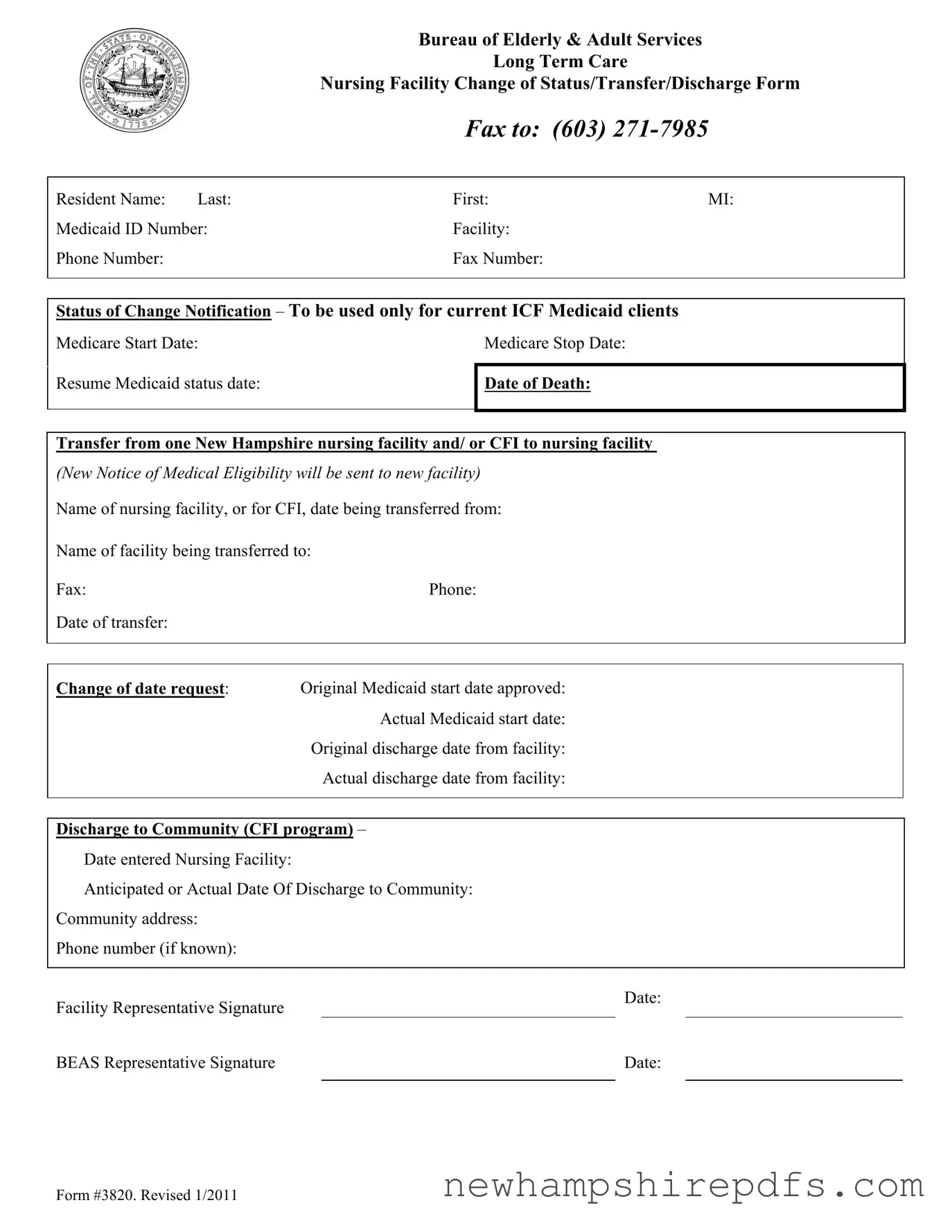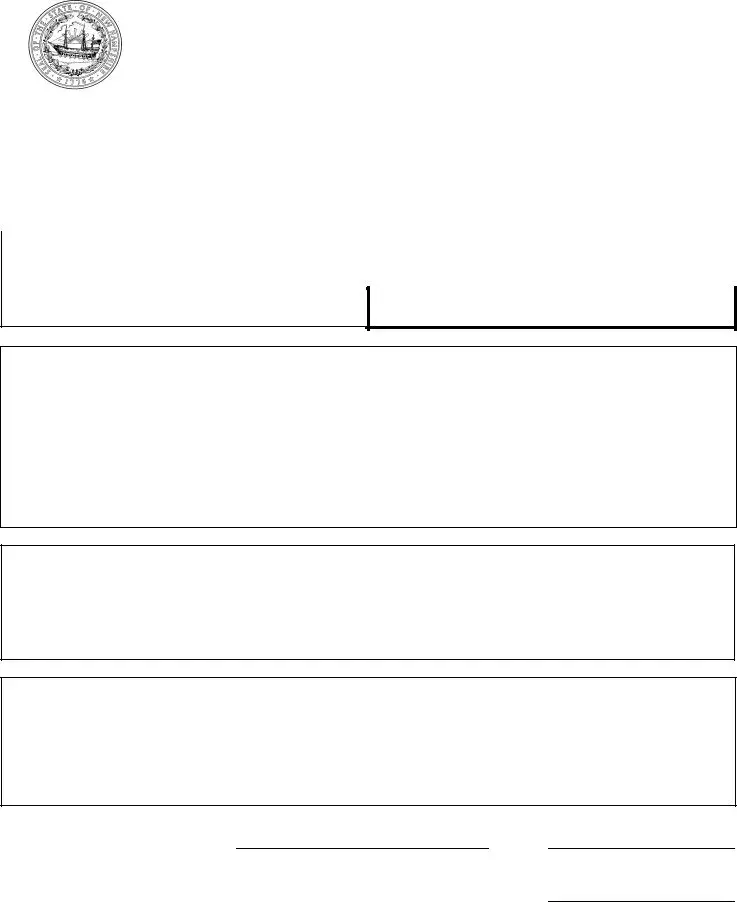What is the New Hampshire 3820 form used for?
The New Hampshire 3820 form is specifically designed for the Bureau of Elderly & Adult Services. It is used for reporting changes in the status of residents in long-term care nursing facilities, including transfers between facilities, discharges, and other significant status updates. This form is intended only for current Intermediate Care Facilities (ICF) Medicaid clients.
Who needs to fill out the New Hampshire 3820 form?
Facility representatives, such as administrators or designated staff of the nursing home or long-term care facility, are responsible for completing and submitting the 3820 form. This is necessary whenever there's a change in a resident's Medicaid status, transfer, discharge, or death.
What information is required on the 3820 form?
The form requires detailed information about the resident, including their name, Medicaid ID number, and the facility's contact information. It also asks for specifics regarding the change of status, such as Medicare start and stop dates, dates of death, transfer details (including the name of the facility transferred from and to), and discharge details, including the discharge to a community under the CFI program.
How is the 3820 form submitted?
The completed 3820 form should be faxed to the Bureau of Elderly & Adult Services at the fax number provided on the form: (603) 271-7985.
What happens after submitting the form?
Upon receiving the form, the Bureau of Elderly & Adult Services will process the information to update the resident's status in their systems. If a transfer is reported, a new Notice of Medical Eligibility will be sent to the new facility. Facilities might be contacted for additional information if necessary.
Is there a deadline for submitting the 3820 form?
While the form itself does not specify a deadline, it’s crucial to submit changes of status as soon as possible to ensure that records are accurate and that residents receive appropriate care and billing is correctly processed.
Can the 3820 form be used for new admissions?
No, the 3820 form is primarily used for changes in status, including transfers, discharges, and death of current residents. New admissions to a facility would require different documentation and procedures.
What if there are errors on the submitted 3820 form?
If errors are discovered on a submitted form, it's important to contact the Bureau of Elderly & Adult Services immediately to correct the information. Providing accurate and up-to-date information ensures that residents receive the care they need and that facilities are properly compensated.
Are there any penalties for not submitting or incorrectly filling out the 3820 form?
Specific penalties are not outlined in the form’s instructions, but failing to report changes in a timely and accurate manner can lead to billing errors, issues with resident care, and potential audit problems for the facility. It’s crucial to adhere to all Medicaid regulations and reporting requirements to avoid these complications.

